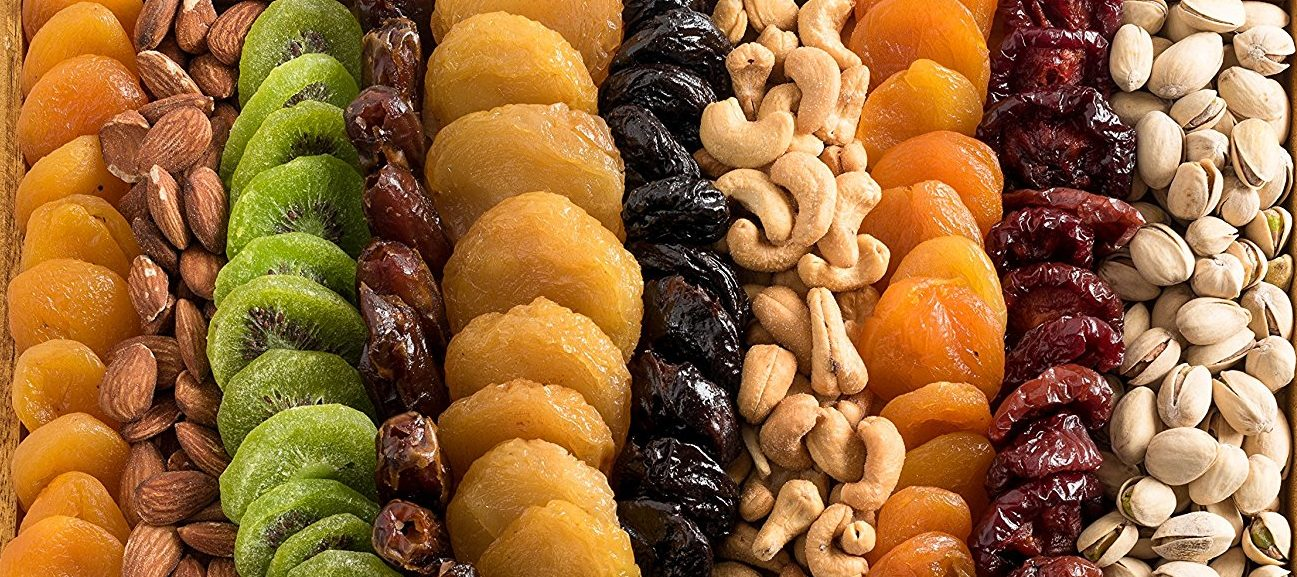Types of Fruits
Every single fruit, regardless of whether it looks like the kind of fruit we are used to seeing in the produce section, have 3 distinct layers—the exocarp layer of the fruit. Usually in direct contact with the environment, provides the texture of the fruit. (outside), mesocarp Middle layer of the fruit, in between the exocarp and the endocarp. It becomes fleshy in the fleshy fruits and is thicker in fleshy fruits compared with the dry fruits, and endocarpInnermost layer of the pericarp, in direct contact with the placenta (from where the seeds form). It can be either hard (like in a stone fruit like a peach), membranous, or fleshy in a few fleshy fruits (like the tomato). (inside). Together, these layers form the pericarp. The part of the fruit that surrounds the seed(s). The pericarp is formed by 3 distinct layers: exocarp, mesocarp, and endocarp. Although these layers are sometimes hard to tell apart, they can be identified within most fruits you eat. Fruits are usually classified based on tissue types, texture, shape, and dehiscence Splitting open at maturity to release its contents (for example the fruit splits to remove the seeds). (when the fruit splits open as a stage of development, like peas), and other morphological characteristics. Fruits can be divided into main categories: fleshy fruits and dry fruits. Buy our best seller here.
Fleshy Fruits
Fleshy fruits have high water content in the pericarp, and a fleshy mesocarp once they are mature. This means that fleshy fruits are juicier than dry fruits. The group of fleshy fruits consists of a few of the fruits that you may find in the grocery store, and many sweet fruits, such as peaches and apples. Although we eat the seed and not the fruit, pomegranates also fall beneath this category because their pericarp is tender and fleshy. Avocados, peaches, plums, and other fruits with pits are also fleshy fruits because they have a thick and fleshy mesocarp. Peppers, cucumbers, and tomatoes are also examples of fleshy fruits, even though they are usually referred to as vegetables. Most edible fruits fall into the category of fleshy fruits. These fruits use animals, such as birds or humans, to disperse the seeds.
Dry Fruits
Dry fruits are hard and dry when they are fully mature. The pericarp of dry fruits still has 3 layers—exocarp, mesocarp, and endocarp—however, compared with fleshy fruits, they are thinner and do not have as much water. Sometimes the pericarp is in direct contact with the seed, making it hard to tell the fruit apart from the seed. Most dry fruits do not depend on animals to spread their seeds. Instead, they use other mechanisms, such as dehiscence to lose the seeds, or using water or the wind to blow their seeds away (think of dandelions: the slightest wind will send the fruits, equipped with parachute-like hairs, flying away).
A strawberry is an example of dry fruit. If you look closely at a strawberry, you'll notice specks on the outside. Each of those specks is a dry fruit, called achene; the sweet, red flesh of the strawberry isn't part of the fruit. It is a part of the flower that will become fleshy and edible. Some other examples of dry culmination are corn and pistachios.

